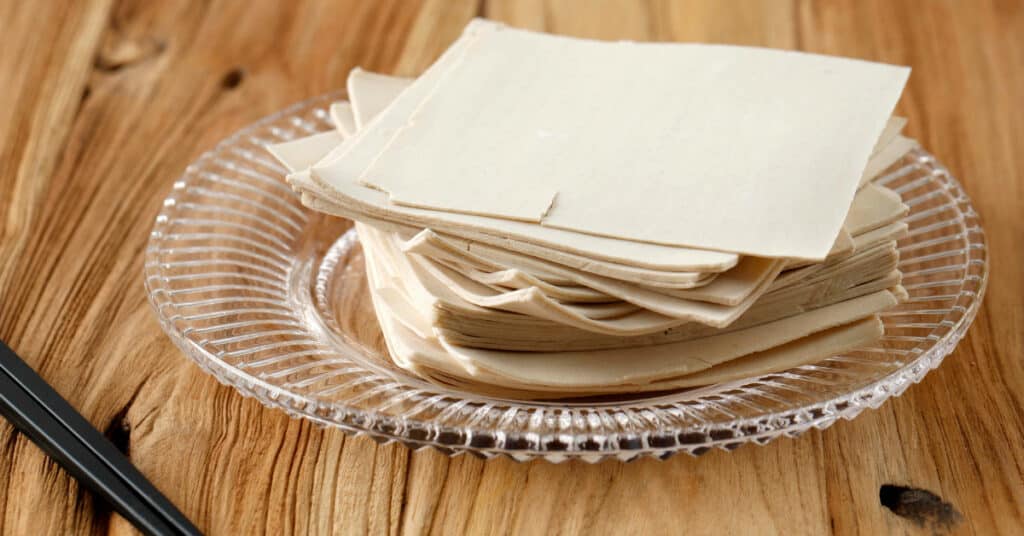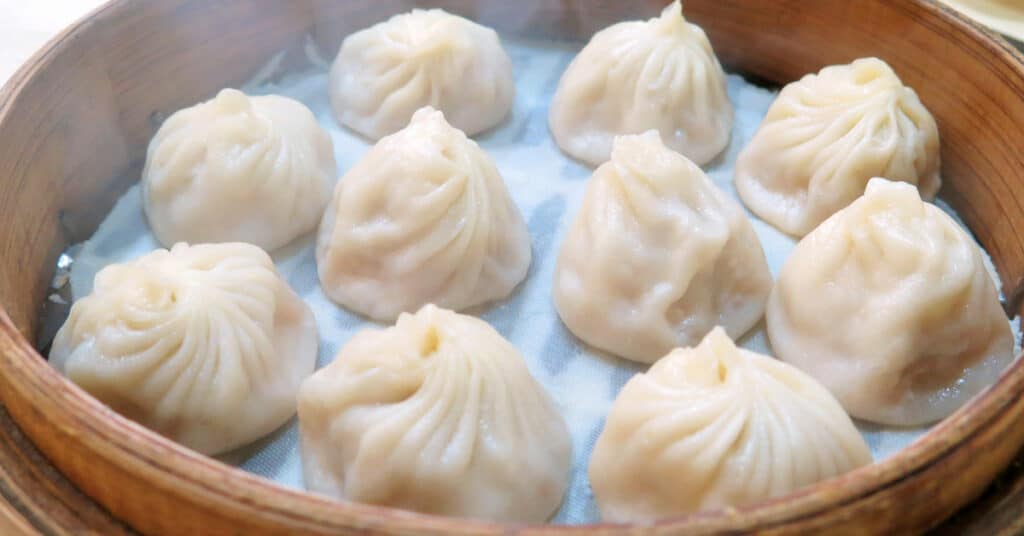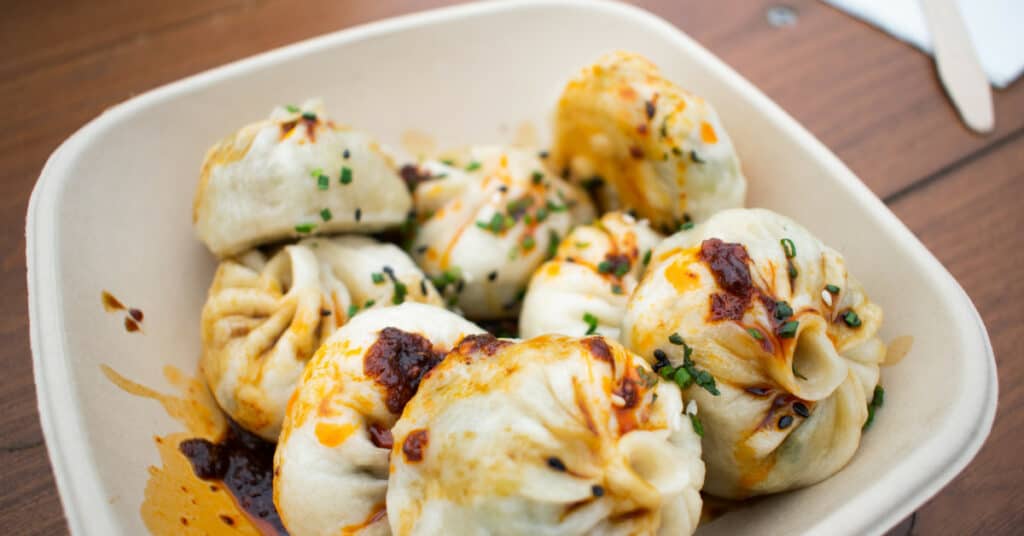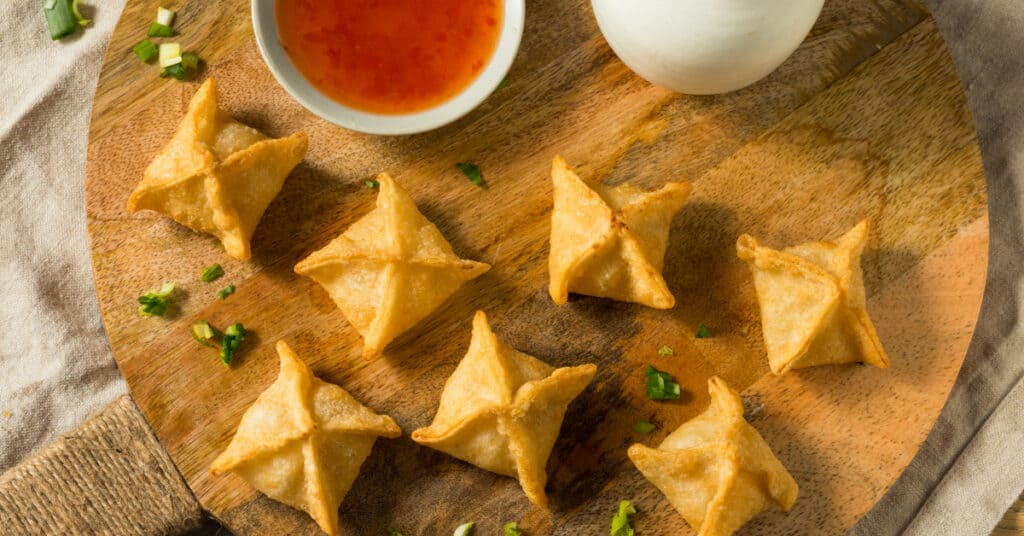SUMMARY: Wontons and dumplings are both popular Chinese dishes, but they differ in their fillings, wrappers, and cooking methods. Wontons are typically smaller, with a thinner wrapper, and are often served in soups. Dumplings, on the other hand, have a thicker wrapper and can be steamed, boiled, or pan-fried. While they share similarities, these two tasty treats have distinct characteristics that set them apart.
Do you need clarification on wontons and dumplings?
Are you unsure about the differences and similarities between these two beloved Asian delicacies?
Get ready to become a wonton and dumpling connoisseur as we satisfy your craving for knowledge and settle the wonton vs dumpling debate once and for all.
Understanding Wontons
Wontons are a beloved staple in Chinese cuisine, known for their delicate wrappers and flavorful fillings. To truly appreciate wontons, it’s essential to understand their characteristics and origins. Here’s what you need to know:

What Exactly is a Wonton?
- Wontons are a type of Chinese dumpling made with a thin dough sheet.
- The dough is typically made from flour, water, and sometimes eggs, resulting in a soft and silky texture.
- Wontons are usually filled with ground meat (such as pork) or seafood and sometimes combined with vegetables or herbs for added flavor.
- The filling is sealed inside the dough, often shaped into small triangles or pleated pouches.
A Peek into Wonton History
- Wontons have a rich history dating back thousands of years in China.
- They are believed to have originated in the Northern Chinese region of Shandong, where they were served during festivals and special occasions.
- Over time, wontons spread throughout China and became popular in various regional cuisines.
Regional Variations and Popular Dishes
- Wontons have numerous regional variations, each with its own unique twist.
- In Sichuan cuisine, the iconic Sichuan wontons are served in a spicy chili oil sauce, known for their fiery flavors and numbing sensation.
- Cantonese wonton soup is another popular variation, consisting of plump wontons served in a clear, flavorful broth alongside noodles and leafy greens.
- Other regional favorites include Shanghai-style wontons, which have a meaty filling and are often enjoyed with soy sauce or vinegar.
Now that we have a deeper understanding of wontons, let’s unveil the world of dumplings in the next section.
Unveiling Dumplings
Dumplings are a staple in many cultures worldwide, known for their delightful flavors and diverse fillings. Let’s take a closer look at what makes dumplings so unique:

What is a Dumpling?
- A dumpling is a small, savory dish that wraps dough around a filling.
- The dough can be made using various ingredients, including flour, water, and sometimes eggs or oil.
- The filling can consist of minced meat, vegetables, seafood, or a combination.
- Dumplings are typically boiled, steamed, or fried, depending on the cultural tradition.
Interesting Facts and Anecdotes
- Dumplings have a rich history tracing back thousands of years. They have been documented as early as the Han Dynasty in China, around 206 BC to 220 AD.
- In some cultures, dumplings are believed to bring good luck. They are often associated with prosperity and are commonly eaten during festivals and celebrations.
- The word “dumpling” is thought to have originated from the German word “dampf,” meaning “damp” or “moist,” which accurately describes the texture of dumplings when cooked.
Regional Variations and Popular Dishes

Dumplings have evolved differently in various regions and cuisines, leading to an array of unique dumpling dishes:
- Chinese Dumplings: Known as Jiaozi, Chinese dumplings are usually crescent-shaped and filled with a mixture of ground pork, vegetables, and seasonings. They are traditionally served during Chinese New Year and other special occasions.
- Japanese Dumplings: Gyoza is a popular type of dumpling in Japan. These dumplings are typically filled with ground pork, cabbage, garlic, and ginger. They’re pan-fried to achieve a crisp texture and served with a tangy dipping sauce.
- Italian Dumplings: Italy boasts a delicious dumpling variety called gnocchi. Made from potatoes, flour, and eggs, these small dumplings are soft and pillowy. They are often served with various sauces, including tomato-based, cream-based, or pesto.
- Eastern European Dumplings: Pierogi, a staple in Eastern European cuisine, are dumplings that usually feature fillings such as potatoes, cheese, meat, or mushrooms. They can be boiled, steamed, or pan-fried and are commonly served with sour cream.
Dumplings, with their versatility and worldwide appeal, have become beloved dishes in many cultures. The blending of different ingredients and cooking techniques has resulted in a vast assortment of flavors that can satisfy even the most discerning palates.
Similarities and Differences
When comparing wontons and dumplings, it’s important to note their similarities and differences. While they may appear similar at first glance, these subtle variations contribute to unique culinary experiences. Let’s delve deeper into the distinct characteristics of wontons and dumplings:

Wrappers
- Wontons:
- Wonton wrappers are typically thin and semi-translucent.
- They are made with eggs, flour, and water, resulting in a slightly chewy texture.
- The wrappers are generally square-shaped, perfect for folding into various shapes.
- Dumplings:
- Dumpling wrappers often have a thicker and more elastic texture.
- Commonly made with flour and water, these wrappers exhibit a soft and pliable consistency.
- Dumpling wrappers are typically round, facilitating easy folding and sealing techniques.
The difference in texture and shape between wonton and dumpling wrappers adds uniqueness to their respective dishes.
Fillings
- Wontons:
- Wontons are known for their rich filling-to-wrapper ratio.
- The fillings usually consist of seasoned ground meat (commonly pork) and a blend of vegetables, herbs, and occasionally shrimp.
- Wonton fillings may also vary across different regions and personal recipes, allowing for a wide range of flavor profiles.
- Dumplings:
- Dumplings offer a broader range of filling options.
- Fillings can include various combinations of ground meat (such as pork, chicken, or beef), seafood, vegetables, mushrooms, or tofu.
- Dumpling fillings can be seasoned with various herbs, spices, and sauces, creating distinct flavors.
While wontons and dumplings feature flavorful fillings, the differences in ingredients and seasonings contribute to unique tastes.

Cooking Methods
- Wontons:
- Wontons are often boiled in a flavorful broth, which allows the delicate wrappers to absorb the savory flavors.
- Alternatively, they can be deep-fried, resulting in a crispy texture that contrasts with the tender filling.
- Dumplings:
- Dumplings can be cooked using various methods, including boiling, steaming, pan-frying, or baking.
- Boiled dumplings are popular, resulting in a soft and tender texture.
- Pan-fried dumplings, commonly known as potstickers, feature a crisp and golden exterior, offering an enjoyable textural contrast.
The different cooking techniques provide diverse experiences, further distinguishing wontons from dumplings.
Personal preferences for either wontons or dumplings may vary based on factors such as texture, filling options, and cooking methods. Ultimately, deciding between these two delectable dishes depends on individual taste and the culinary experience one seeks.
The Great Debate: Wonton vs Dumpling
As lovers of both wontons and dumplings engage in spirited discussions about which is the superior choice, let’s venture into the great debate and explore the unique characteristics that make each of them special:
Flavor Profiles and Texture
- Wontons:
- Wontons, with their thin and delicate wrappers, provide a light and subtle eating experience.
- The filling is often well-seasoned, featuring a harmonious blend of flavors.
- Wontons cooked in broth offer a comforting and savory taste, with the wrapper absorbing the rich flavors of the soup.
- Dumplings:
- Dumplings offer a more substantial and satisfying eating experience due to their thicker wrappers.
- The filling can be more varied and robust in flavor, with different combinations of ingredients.
- Whether boiled, steamed, or pan-fried, dumplings provide a satisfying textural contrast between the soft wrapper and the juicy filling.
Exploring the flavor profiles and textures of both wontons and dumplings reveals the diversity they bring to the table.

Popularity and Deliciousness
The debate surrounding which is more popular or delicious can be subjective, as it largely depends on personal preferences and cultural background.
- Wontons:
- Wontons have gained popularity in several parts of the world due to their unique qualities.
- Their delicate appearance and subtle flavors appeal to those who prefer a lighter and more refined culinary experience.
- Wontons are often celebrated for their versatility, as they can be enjoyed in various dishes and cooking methods.
- Dumplings:
- Dumplings have achieved widespread popularity and are often regarded as comfort food.
- Their heartier textures and bolder flavors appeal to those seeking a more substantial and filling meal.
- Dumplings’ versatility in fillings and cooking methods allows for a wide range of taste experiences.
Ultimately, the debate between wontons and dumplings boils down to personal preference and the desired dining experience.
Both wontons and dumplings have successfully transcended cultural boundaries, gaining popularity worldwide due to their unique qualities. While some may lean towards the delicate and refined nature of wontons, others may revel in the heartiness and variety offered by dumplings. Whichever side of the debate one may take, it’s clear that both wontons and dumplings have secured their place in the hearts and palates of food enthusiasts globally. Why not embrace the best of both worlds by indulging in wontons and dumplings as part of your culinary adventures?
Key Takeaways: Wonton vs Dumpling
In conclusion, understanding the nuances between wontons and dumplings is not only informative but also a delightful journey into the realm of culinary delights. Whether you prefer the delicate and silky texture of wontons or the comforting and versatile nature of dumplings, both have unique charms that have captivated taste buds across the globe. To summarize, here are the key takeaways from this article:
- Wontons are a type of dumpling originating from Chinese cuisine. They are usually characterized by their thin and tender wrappers and various fillings.
- Dumplings, conversely, encompass a wide range of dough-wrapped dishes found in many cultures, including Chinese, Korean, Vietnamese, and more.
- Both wontons and dumplings offer an array of flavors, from savory to sweet, and can be enjoyed in various forms, such as in soups or steamed.
- The wrappers and fillings constitute the main differences between wontons and dumplings, with wontons typically having thinner and more delicate wrappers. In contrast, dumplings can have thicker, more doughy wrappers.
- Additionally, cooking methods can vary, with wontons often being boiled or served in soups and dumplings commonly steamed, fried, or baked.
- The debate between wontons and dumplings ultimately boils down to personal preferences and experiences, as there is no definitive “winner” in terms of which is tastier or more popular.
So, whether you indulge in wontons or dumplings, rest assured that both will continue to be beloved culinary creations that bring joy and satisfaction to countless food enthusiasts worldwide.

FAQ Section: Wonton vs Dumpling
Can I use wonton wrappers for dumplings?
Yes, you can definitely use wonton wrappers for dumplings. Wonton wrappers are versatile and can make various types of dumplings, such as steamed or pan-fried ones. However, remember that wonton wrappers are typically thinner and more delicate than dumpling wrappers, so you may need to adjust the cooking time or method accordingly.
What are some vegetarian alternatives for both wontons and dumplings?
For wontons, you can use a variety of vegetarian fillings such as minced tofu, mushrooms, or a combination of vegetables like cabbage, carrots, and spring onions. Similarly, for dumplings, you can experiment with different vegetable fillings, incorporating ingredients like spinach, edamame, or even mixed bell peppers. The key is ensuring the filling is well-seasoned and flavorful to create a delightful vegetarian counterpart to traditional wontons and dumplings.

